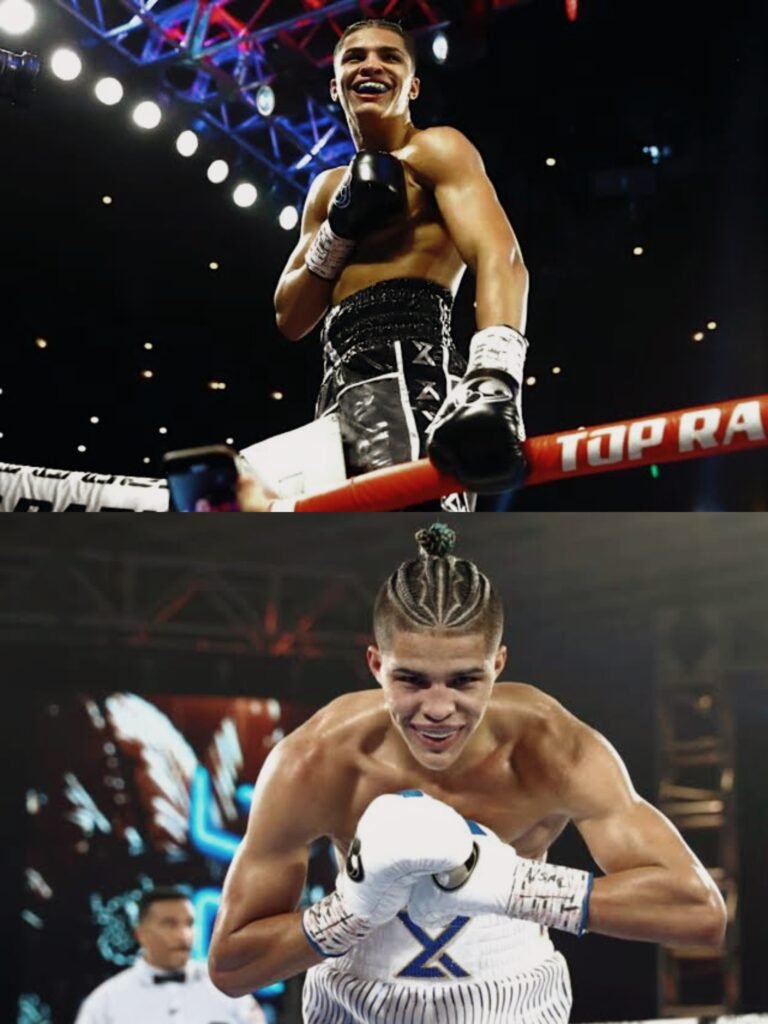At only 22 years old, Puerto Rico’s Xander Zayas has been officially named the newest world champion, topping ESPN’s divisional rankings and various sanctioning bodies. Zayas’ emphatic victory against Jorge Garcia Perez on July 26, 2025, secured the vacant WBO junior middleweight belt and launched him into the spotlight as boxing’s emerging star. ESPN’s new rankings now show him as the youngest active world champion, resulting in substantial movement across categories.
While Zayas’ performance happened at 154 lbs, the news spread downward: a “new king at flyweight” currently leads the divisional rankings at 112 lbs. ESPN’s “Boxing divisional rankings” affirm the formation of a new hierarchy in the flyweight division, despite the absence of a current unified titleholder.
Flyweight Rankings—Who’s Now on Top?
According to BoxRec and ESPN, the current flyweight pecking order presently includes:
Champion (vacant slots): Multiple sanctioning bodies list differently.
Top candidates include Kenshiro Teraji, Masamichi Yabuki, Anthony Olascuaga, Ricardo Sandoval, and Galal Yafai, with Zayas’ growth influencing ranks behind the scenes.
Notable names in the top 5 include:
Kenshiro Teraji: dominant across WBA/WBC.
Masamichi Yabuki: rising contender in Japan.

Anthony Olascuaga & Ricardo Sandoval: fighters gaining global attention.
With divisions crowded and new title claims emerging, the landscape is shifting—but there’s clear room for fresh leaders to shine.
Why Zayas’ Win Matters
Leapfrogging the Usual Trajectory
Zayas is one of boxing’s most promising young fighters, having won the championship at the age of 22. He is one of the youngest fighters to rise so swiftly, defying usual set schedules to achieve top level.
Valuing Consistency and Talent
His style—a combination of movement, accuracy, and intelligence—exhibited development beyond his years. In rankings, the ascent involves more than simply belts; it’s also about matching performance and worldwide momentum.
Indirect Impacts
Zayas’ breakthrough changes not only the junior middleweight environment, but also attitudes in categories above and below him. With no undisputed flyweight champion currently active, divisions are reordering based on activity and trajectory, creating opportunity for boxers like Sandoval or Agui to go up the rankings.
Key Names and Their Movement
Kenshiro Teraji: Continues to anchor the flyweight division across major sanctioning organizations—retaining top-earner status.
Masamichi Yabuki and Anthony Olascuaga: Climbed in the pecking order as activity intensified in the division.
Ricardo Sandoval: A former titleholder and noted contender, he’s maintained his position as a key name in rankings.

Ratings Synced Across Platforms
BoxRec ranking: Puts Sandoval, Yafai, and Olascuaga within the top tier, now adjusting their slots relative to the new flyweight conversation.
The Ring & TBRB: Reflect similar shifts, with newcomers elevated and division heads recalibrated.
What It Means for Fans and Fighters
Flyweight is currently regarded as potentially transforming into a deeper and more explosive class as a result of Zayas’ surprise appearance.
Prospects ranked below #5 or outside the top ten may now require championship eliminators or interim matches to be relevant.
Boxing politics and sanctioning benchmarks are shifting: vacant belts, pending championship defenses, and all awaiting clarification in the coming months.
Final Takeaways
Xander Zayas, the current WBO junior middleweight champion, has risen substantially in ESPN’s divisional rankings, rewriting assumptions about young fighters’ quick ascension.
His rise sparked bigger swings across the ranks, including the emergence of a symbolic new flyweight king despite the absence of a championship fight in that division.
Traditional names such as Teraji, Yafuki, Sandoval, and Olascuaga remain popular, but they must now navigate a more competitive, activity-driven hierarchy.
Zayas’ quick climb in worldwide fame, paired with divisional instability, shows that boxing has returned to a dynamic period in which age, activity, and momentum are as important as titles. Expect additional shakeups at flyweight, junior middleweight, and beyond as the sport rebalances around new champions.